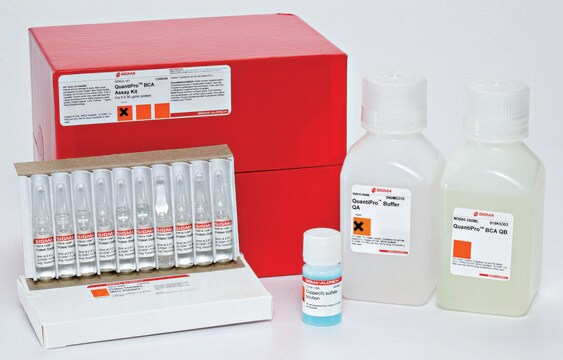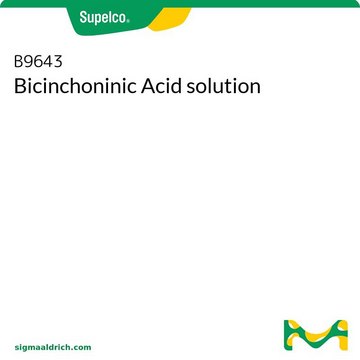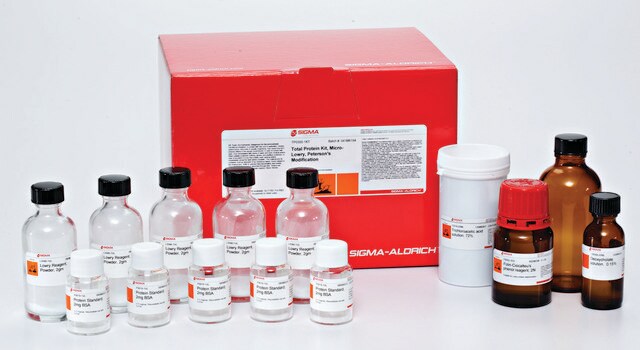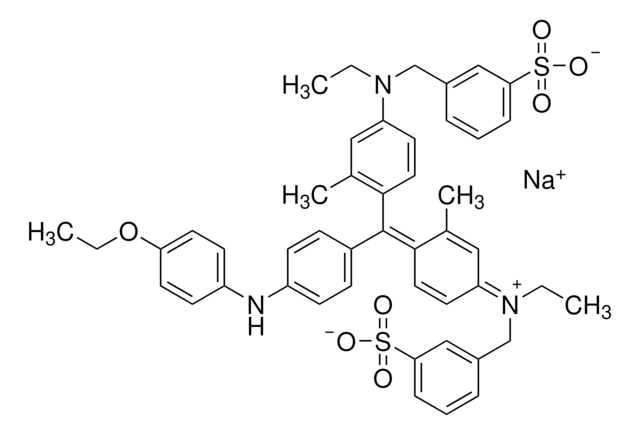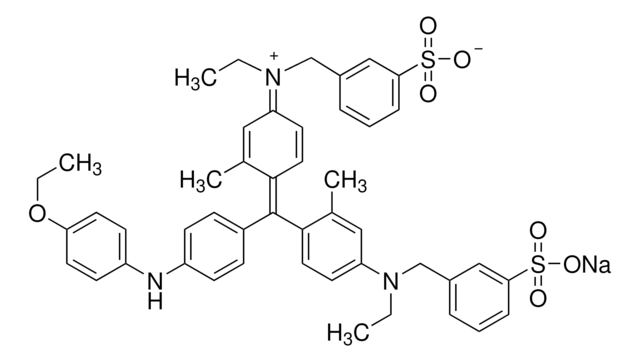FP0010
FluoroProfile™ Protein Quantification Kit
Zaloguj sięWyświetlanie cen organizacyjnych i kontraktowych
About This Item
Kod UNSPSC:
12352200
Polecane produkty
Warunki transportu
wet ice
temp. przechowywania
−20°C
Zastosowanie
Reversible covalent binding to proteins by the fluorophore epicocconone provides a powerful and sensitive method for protein quantification
Cechy i korzyści
- Yields an intense fluorescent red on protein binding
- Binding is completely reversible making the protein suitable for mass spectrometry and functional assays
- Water soluble proteins may be quantified without using organic solvents
- A large dynamic range, large Stokes shift and highly sensitive
- Highly tolerant of substances commonly interfering with protein quantification
- Biodegradable and environmentally friendly
Inne uwagi
For the quantification of total protein in solution by the interaction of a unique fluorophore with the amines of polypeptides.
Informacje prawne
FluoroProfile is a trademark of Sigma-Aldrich Co. LLC
Ta strona może zawierać tekst przetłumaczony maszynowo.
Elementy zestawu są też dostępne oddzielnie
Numer produktu
Opis
Karta charakterystyki
- P5619Protein Standard, analytical standard, 2 mg/vial BSAKarta charakterystyki
Hasło ostrzegawcze
Warning
Zwroty wskazujące rodzaj zagrożenia
Zwroty wskazujące środki ostrożności
Klasyfikacja zagrożeń
Eye Irrit. 2
Kod klasy składowania
10 - Combustible liquids
Klasa zagrożenia wodnego (WGK)
WGK 3
Temperatura zapłonu (°F)
Not applicable
Temperatura zapłonu (°C)
Not applicable
Wybierz jedną z najnowszych wersji:
Masz już ten produkt?
Dokumenty związane z niedawno zakupionymi produktami zostały zamieszczone w Bibliotece dokumentów.
Phillip J L Bell et al.
Journal of the American Chemical Society, 125(31), 9304-9305 (2003-08-02)
Epicocconone represents a new class of natural fluorescent probes based on a polyketide skeleton isolated from the fungus Epicoccum nigrum. Epicocconone is a small, cell permeable natural product with a high molar absorbtivity and a long Stokes' shift that will
Ondřej Kaplan et al.
PloS one, 11(10), e0163697-e0163697 (2016-10-08)
We describe the production of a highly-active mutant VEGF variant, α2-PI1-8-VEGF121, which contains a substrate sequence for factor XIIIa at the aminoterminus designed for incorporation into a fibrin gel. The α2-PI1-8-VEGF121 gene was synthesized, cloned into a pET-32a(+) vector and
R P Ubrihien et al.
Archives of environmental contamination and toxicology, 82(4), 520-538 (2022-04-21)
The effects of multigenerational Cu exposure on the freshwater gastropod Isidorella newcombi were investigated. Snails were exposed to a range of treatment-specific Cu concentrations in the parental to F2 generations, and a common Cu concentration in the F3 generation. In
Helena A Schmitz et al.
Aquatic toxicology (Amsterdam, Netherlands), 160, 22-30 (2015-01-13)
Metals are accumulated by filter feeding organisms via water, ingestion of suspended sediments or food. The uptake pathway can affect metal toxicity. Saccostrea glomerata were exposed to cadmium through cadmium-spiked suspended sediments (19 and 93μg/g dry mass) and cadmium-enriched phytoplankton
Anne M Taylor et al.
Comparative biochemistry and physiology. Toxicology & pharmacology : CBP, 166, 34-43 (2014-07-11)
The metalloid selenium is an essential element which at slightly elevated concentrations is toxic and mutagenic. In Australia the burning of coal for power generation releases selenium into estuarine environments where it accumulates in sediments. The relationship between selenium exposure
Nasz zespół naukowców ma doświadczenie we wszystkich obszarach badań, w tym w naukach przyrodniczych, materiałoznawstwie, syntezie chemicznej, chromatografii, analityce i wielu innych dziedzinach.
Skontaktuj się z zespołem ds. pomocy technicznej

